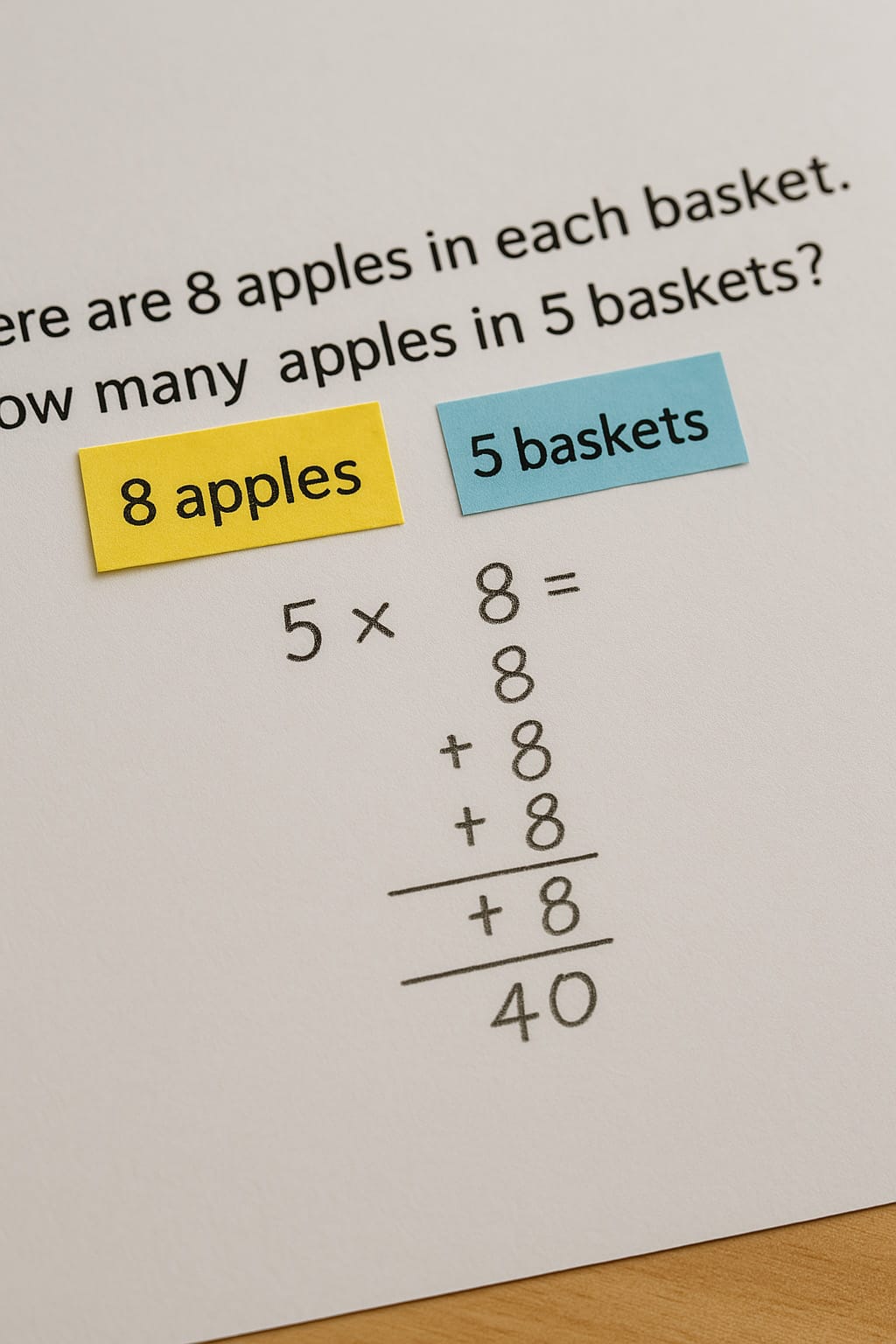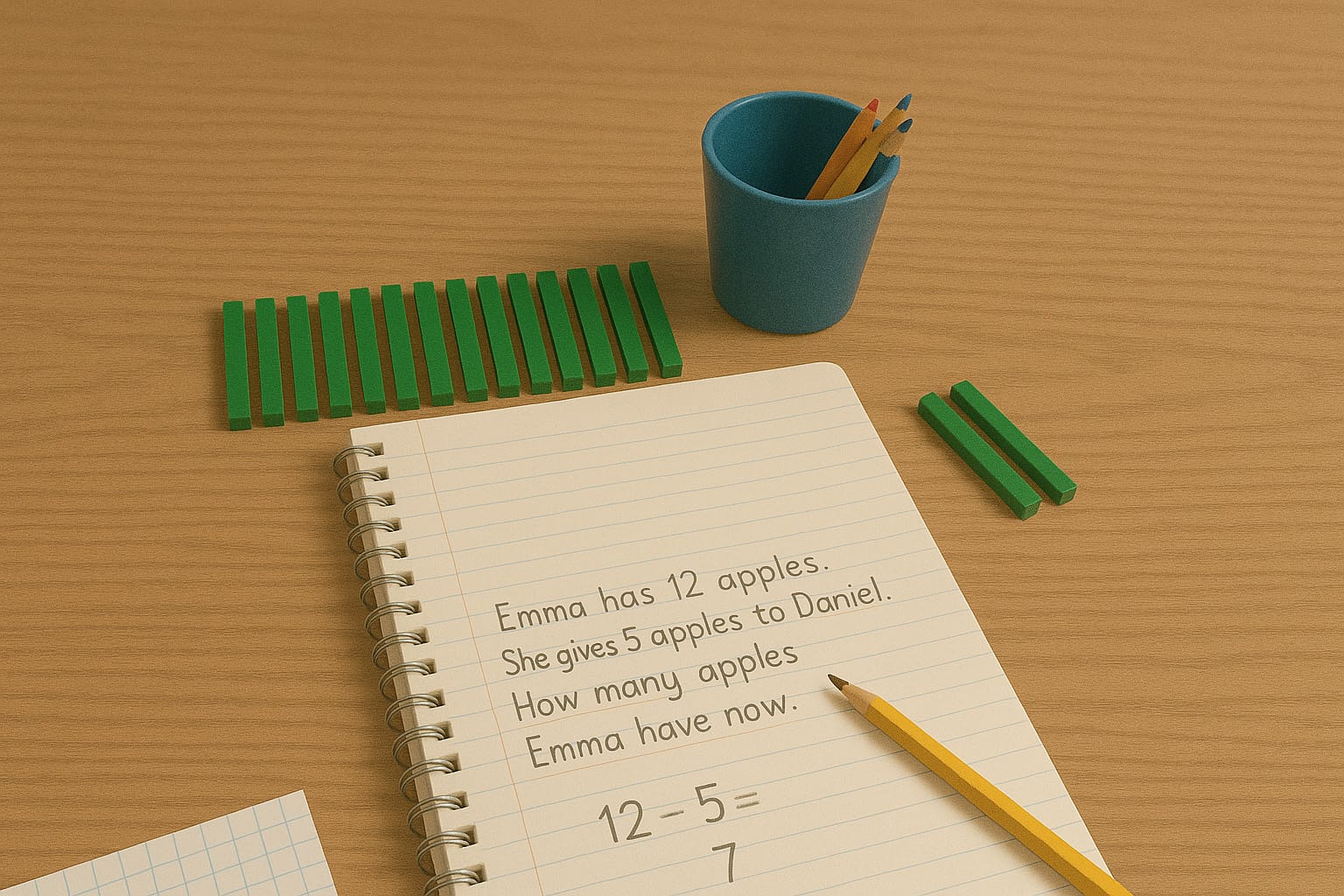Why Autistic Kids May Struggle with Word Problems (And How To Help)
My child can solve equations perfectly fine, but as soon as it's a word problem, they're completely lost.
Sound familiar?
If you're a parent of an autistic child, you've probably experienced this paradox: your child grasps numbers and formulas, but give them a word problem—and everything seems to fall apart. This isn't a reflection of intelligence or capability; it's a mismatch between how autistic learners process information and how traditional math problems are often presented.
In this article, we’ll explore the cognitive, linguistic, and sensory reasons autistic children often struggle with math word problems. More importantly, we'll offer evidence-backed strategies to support them.
The Language Processing Barrier
Math is often thought of as purely numerical—but word problems are a hybrid of math and language. For autistic learners, this dual demand can be overwhelming.
Research shows that many autistic children experience difficulties with pragmatic language skills—understanding implied meanings, figurative language, or the social context of words (Tager-Flusberg, 2000). Word problems often require interpreting real-world scenarios, identifying relevant details, and translating that into math—all language-heavy tasks.
Example:
“John has three times as many apples as Sara. If Sara has 4 apples, how many does John have?”
This requires decoding comparative language and sequencing events, which can be cognitively taxing for autistic learners. If these learners are also behind grade level in language, simply understanding the meaning can be a challenge.
Strategy:
Simplify sentence structures when introducing problems
Highlight key words and phrases
Teach translation from words to equations explicitly

Executive Function Challenges
Executive function refers to the mental skills used to plan, focus, remember instructions, and juggle multiple tasks. Many autistic children experience difficulties in this area (Demetriou et al., 2019). Word problems demand holding onto multiple pieces of information while manipulating them in working memory.
Example:
A two-step problem that asks for a total and then a difference forces the learner to organize a multi-step solution. This can trigger cognitive overload.
Strategy:
Break problems into bite-sized steps
Use visual organizers or flowcharts
Provide guided models of problem-solving sequences
Difficulty with Theory of Mind and Perspective-Taking
Some word problems assume an understanding of other people’s intentions, beliefs, or knowledge. This links to Theory of Mind—the ability to attribute mental states to others—which can be underdeveloped in autistic individuals (Baron-Cohen et al., 1985).
Example:
“If Liam has 8 marbles and gives 3 to Ava, how many does he have left?”
This requires visualizing Liam’s actions and Ava’s reaction, not just the numbers.
Strategy:
Reframe problems in more objective terms (e.g., “Liam’s total minus 3”)
Use manipulatives or role-play to concretize actions
Encourage drawing or diagramming the scenario

Sensory and Attention Considerations
Classroom environments or worksheet designs can be distracting or overstimulating. Autistic learners may struggle to focus on the relevant parts of a word problem, especially if the layout is dense or includes irrelevant details.
Strategy:
Minimize visual clutter in worksheets
Use color-coding to draw attention to numbers and operations
Read problems aloud or use text-to-speech tools for multi-sensory input
The Emotional Toll of Repeated Failure
When word problems consistently lead to frustration, children can develop math anxiety, which further hampers performance (Ashcraft & Krause, 2007). Autistic children—who may already face higher rates of anxiety—are especially vulnerable.
Strategy
Focus on process over correctness
Celebrate small wins and perseverance
Create a supportive, low-pressure math environment
For word problems, separate the language processing and the math part
How You Can Support Your Autistic Child at Home
Choose math programs that emphasize visual learning and scaffolding
Practice with real-life scenarios your child is already familiar with
Collaborate with teachers to adapt word problems to your child’s strengths
For Word problems, consider using bar modeling (borrowed from Singapore Math). These are very helpful in first understanding what the problem is, before actually solving the math bit in it.
A Gentle Nudge: Monster Math Can Help
At Monster Math, we believe every child deserves to feel confident with math. That’s why our app is designed with customizable difficulty, step-by-step problem solving, and visual learning—all of which can support autistic learners with Math Fact Fluency.
While it’s not a cure-all, Monster Math can be one more tool in your toolbox to make math feel safe, engaging, and doable.
Explore Monster Math here to see how it can complement your child’s learning style.


Comments
Your comment has been submitted successfully!